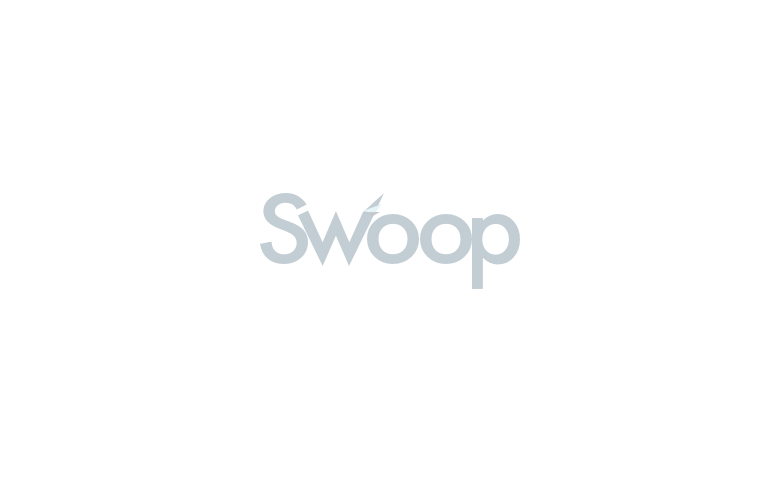TABLE OF CONTENTS
Page written by Chris Godfrey. Last reviewed on October 3, 2024. Next review due April 1, 2026.

It only takes one financial misjudgment or a streak of bad luck to see your good credit turned into bad credit and then you’re locked out from many types of business loan. However, it doesn’t have to be like that. Even with bad credit (or no credit) you may still be able to secure the financing you need. Read on to find out more about bad credit business loans and how they can help you to rebuild your credit and make your business grow.
The term ‘bad credit’ refers to a history of not paying bills or loan repayments on time and the increased likelihood that the borrower will fail to make timely payments in the future. In practice, bad credit really means a poor credit score – the calculation that lenders use to determine the default risk of any borrower. Lenders may use your personal score or your business’ credit score when considering your loan application. Some may use both. A score of 300 to 579 is considered bad credit, 580 to 669 is fair credit and 670 and above is good credit. In some cases, lenders may deny loan applications for bad and fair scores, forcing even moderate risk borrowers to seek loans from bad credit specialists.
Some lenders will place more importance on business credit scores. Business credit scores vary depending on the model being used, although a range of 1 to 100 is most common. Scores below 50 are considered bad credit.
Even if you have bad credit, or if you’ve been turned down elsewhere, it may still be possible to secure the funding your business needs.
This is the simplest form of bad credit business loan. You receive a single, lump-sum cash injection and then pay it back in regular instalments, plus interest and any fees, over a fixed period of anywhere from 1 to 25 years. Depending on the what the loan is being used for – such as buying assets that the lender can place a lien on – it may be possible to secure the funds without providing added collateral, although interest rates and fees will be higher. Term loans can also be secured by adding a cosigner with good credit or solid collateral to the deal. This will also make the loan cheaper to maintain.
Secured business loans are easier for borrowers with bad credit to obtain. You provide hard assets, such as real estate, plant and machinery, or inventory as security for the loan. The lender holds a lien on the assets until the loan is paid back, then full ownership returns to you. Secured loans typically come with lower interest rates and fees than many other bad credit business loans.
A line of credit is a business loan that functions like a high-value credit card. Organisations can withdraw as much as they want when they want from a loan facility up to the limit of their borrowing. Interest rates are usually fixed, and businesses may repay on a set or flexible schedule. This kind of loan is ideal for organisations that want maximum flexibility or for investment situations where the total cash required is unknown. It may be possible to secure the funds without providing added collateral, although interest rates and fees will be higher.
Even if you have bad credit, it may be possible to secure a business credit card to fund your organisation – although the interest rates and fees may be very high. The application process for these cards is usually fast, streamlined and does away with the need for piles of paperwork – in many cases you won’t even need a formal business structure to apply. Business credit cards are also great for re-building your credit if you pay off the balance every month. No added security is usually required.
Equipment loans are ‘self-collateralising’ – they use the asset you’re financing as security, similar to a car loan or a residential mortgage. Once the loan is approved, the lender sends the funds to the equipment vendor, who then delivers the machinery. You use the equipment as you pay for it and the lender maintains a lien on the title to the machinery. No other collateral is required. Once you pay the loan back, the lender releases the lien, and you own the equipment outright.
Also known as account receivables financing, this type of loan allows you to borrow against the value of your unpaid invoices and is best for B2B organisations. The lender will usually provide up to 95% of the invoice value within a few days or even hours of the bill being raised. You may still be responsible for collecting the cash from your clients, or the lender (also known as the ‘factor’) may collect on your behalf. If you collect, you must repay the lender on their schedule. If they collect, they will take back their advance from the client’s payment and then pass any residual sum (after charging interest and fees) back to you. Your invoices act as collateral for the loan, no other security is required.
A merchant cash advance is available for businesses that accept customer payments by credit and debit card. You borrow against the value of your card sales. As your card sales increase, your borrowing limit goes up. Pay the loan back with a fixed percentage of your card sales on a daily, weekly or monthly basis. Your sales act as security for the loan, no added collateral is required.
Interest rates and fees for bad credit business loans can vary significantly, so it makes sense to shop around before settling on a lender. You can do this by approaching banks, credit unions and online lenders one by one, or you can use the services of a loan marketplace that will introduce you to a choice of bad credit loan deals from different lenders. Some marketplace platforms can also give you advice and help you with the application process. This can be especially useful for business owners who have never taken out a business loan before or who have very bad credit.
You can improve your chances of getting approved for a bad credit business loan by preparing in advance. Key tasks to take care of include:
It is common for mistakes to occur on credit reports – both business and personal. Incorrect information could have an adverse impact on your loan application. Check both reports and ensure the details they contain are all correct. If there are errors, get them fixed before applying for a loan.
Unfortunately, despite big promises from the many ‘fast credit repair’ businesses you may see online, there is no quick fix for a poor credit score. It takes time and good financial management to get a poor score back into the good category. Key actions to improve your credit score include:
Lenders will review your ‘income to debt ratio’ when considering your loan application. This means they won’t provide funds if they think you will be unable to pay them back because your total debts are too high. To improve your chances of success, don’t ask for a bigger loan than you can afford to repay. You can work this out by looking at your monthly cash surplus and calculating how much of that you can put aside for an additional loan repayment. Remember that you must always keep a contingency cash float to cover emergencies or unexpected costs, so you should never allocate all your surplus cash to cover extra loan payments.
As well as a compelling reason to take out a business loan (such as expanding operations or launching a new product), you could strengthen your application by offering collateral that is worth more than the sum you are trying to borrow. You could even offer physical collateral when the lender isn’t demanding it to show full confidence in your business.
You can boost your chances of securing finance at lower rate and with a higher loan amount or a lower deposit by adding a cosigner to the transaction – this is usually a colleague, relative, or friend who has good credit and/or collateral they are willing to put up against the debt. The cosigner agrees to guarantee the loan repayment in the event that you default.
Turning bad credit and loan denials into a positive situation can be challenging and you may find it beneficial to work with a loan officer to help steer you through the process. In such cases, it is important to be honest about your true financial position and to take positive steps towards improving your credit. If you’re not sure how to go about this, simply contact Swoop now to confidentially discuss your funding needs with a bad credit loan expert.
No matter if you have bad credit or no credit, working with business finance experts can make all the difference when applying for your loan. Contact Swoop to discuss your borrowing needs, get help with your application and to compare high-quality bad credit business loans from a choice of lenders. Don’t let a poor credit score slow your business down. Register with Swoop to get started.
Written by
Chris is a freelance copywriter and content creator. He has been active in the marketing, advertising, and publishing industries for more than twenty-five years. Writing for Barclays Bank, Metro Bank, Wells Fargo, ABN Amro, Quidco, Legal and General, Inshur Zego, AIG, Met Life, State Farm, Direct Line, insurers and pension funds, his words have appeared online and in print to inform, entertain and explain the complex world of consumer and business finance and insurance.
Swoop promise
At Swoop we want to make it easy for SMEs to understand the sometimes overwhelming world of business finance and insurance. Our goal is simple – to distill complex topics, unravel jargon, offer transparent and impartial information, and empower businesses to make smart financial decisions with confidence.
Find out more about Swoop’s editorial principles by reading our editorial policy.
Related pages
Get your free Bad credit business loan quote today
Join the 110,000+ businesses just like yours getting the Swoop newsletter.
Free. No spam. Opt out whenever you like.
Kingfisher Way, Silverlink Business Park, Newcastle upon Tyne, NE28 9NX, UK
View in Google MapsAberystwyth Innovation and Enterprise Campus
Gogerddan Campus
Aberystwyth University
Ceredigion
SY23 3EE
Dogpatch Labs, The CHQ Building, Custom House Quay, Dublin, Ireland
View in Google MapsSuite 801, Level 8, 84 Pitt Street, Sydney, NSW 2000, Australia
View in Google Maps43 W 23rd St, New York, NY 10010, United States
View in Google Maps21 Dreyer Street, Cape Town, South Africa, 7708
View in Google Maps
Disclaimer: Swoop Finance Ltd (Swoop) helps Canadian firms access business finance, working directly with businesses and their trusted advisors. We are a credit broker and do not provide loans or other finance products ourselves. All finance and quotes are subject to status and income. Applicants must be aged 18 and over and terms and conditions apply. Guarantees and Indemnities may be required. Swoop can introduce applicants to a number of providers based on the applicants’ circumstances and creditworthiness. Swoop may receive a commission or finder’s fee for effecting such introductions. If you feel you have a complaint, please read our complaints section highlighted above and also contained within our terms and conditions.
Clever finance tips and the latest news
Delivered to your inbox monthly
Join the 110,000+ businesses just like yours getting the Swoop newsletter. Free. No spam. Opt out whenever you like.




